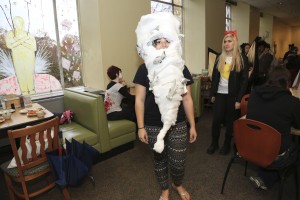Let’s not beat around the bush. Chatham University’s new addition of the Eden Hall campus is not fooling anyone. You can add all the fancy water filtration systems and solar panels you like–this new campus is not sustainable, nor will it ever be, so let’s stop pretending that it is.
In Fall 2015, the Eden Hall campus will be open for undergraduate and graduate residents and will be the new location for the majority of the Food Studies and Sustainability classes. Claimed to be, “the embodiment of a commitment Chatham makes every day to support sustainability and environmental education,” the campus sits on 388-acres of donated land in Gibsonia, PA which is a little more than 20 miles north of Chatham’s Shadyside campus.
Upon applying to the Masters of Sustainability program, I, like my fellow classmates, couldn’t help but feel impressed by the plans for Eden Hall. We were dazzled by promises of aquaculture, green infrastructure, gardens, solar panels, and, more importantly, the promise of an environment that would foster skills to promote societal change, which arguably is the main reason that many of us are here in the Falk School of Sustainability. However, these illusions fizzled as soon as the realities of this development became apparent.
At a recent town hall meeting on February 11, a slideshow of dorm arrangements and smiling “hypothetical” students was presented by the Dean of the Falk School of Sustainability Peter Walker to a group of undergraduate and graduate students from the Sustainability and Food Studies programs, followed by a discussion about some nitty-gritty details about what life would look like on this campus.
Quickly, it became apparent that this whole operation is geared towards undergraduate students, who fit neatly into the plans for residential life. Graduate students, however, do not seem to fit so neatly, stating concerns about transportation, housing, scheduling of classes, and the isolation from the rest of the campus and the city.
Something that stood out strongly to me was that there seems to be very little for sustainability students to do on the this campus if their focus is on business, urban sustainability, or transportation issues, or if they are Food Studies students who are mainly interested in urban agriculture or urban food deserts. Regardless, all students will have to make the trek out to this campus for classes.
Apart from the apparent complete lack of considerations for the “real” students that are going to be living at Eden Hall, this new campus falls extremely short of its main promise of sustainability and is nothing more than glorified green-field sprawl that separates the sustainable community of Chatham from the rest of the university and from the city of Pittsburgh. Concerns about this isolation are centered on the general desire to reduce the siloing of knowledge, an issue that those in the field of sustainability identify as an impediment to societal change and a creator of false dichotomies between us. Physically separating the sustainable community from the larger Chatham community is reducing the opportunity for connections and intellectual growth for everyone.
Isolation is not the only impact this campus will have. The largest concern weighing on my mind is the increase in greenhouse gas emissions from the green-field development (as opposed to in-fill) of the campus and the fact that this development is outside of Pittsburgh. This distance equates to a lack of viable public transit options for students, who will instead have to depend on personal cars, university shuttles, a car-sharing program similar to Zip Car, or, if you wish to be carbon neutral, there is the feeble promise of a smattering of bicycle lanes. Walking–either to class or to run errands–is also no longer a viable option for transportation. But even if it was, to go where? To do what? Which points to the fact that this campus is located in an area that is arguably less attractive to the growing trend of city-loving millennials like myself. Students will now have to either stay on campus or drive off campus for any non-school activities–including trips to the local pub, which raises additional concerns about safety.
At the end of the town hall meeting, all of these voiced concerns were shrugged off by the Dean as mere fears of change. This is dismissive and insults us, the students who are becoming experts in issues of sustainability. While it may be too late for the development plans to be altered or halted, I urge those in the Sustainability program and the Food Studies program, as well as members of the community, to acknowledge what this really is, which is not the formation of a progressive sustainable campus, but mere greenwashing.
You just can’t help asking, why was this development pushed and then slapped with the sticker of sustainability? Who was pushing it? Couldn’t this plot of land have been used in a better way? How do the students in the Falk School of Sustainability move forward, particularly with the goal of remaining a part of the community at Chatham in Shadyside and in the city of Pittsburgh? These are questions that have yet to be answered.









